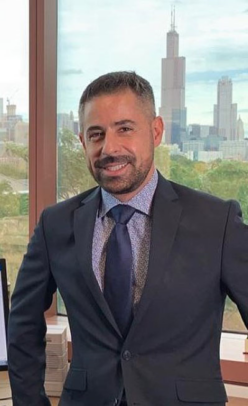UIC neuroscientist contributes to ambitious emotion-mapping project
In research on moods, feelings and emotions, language is key. The field of affective neuroscience studies these phenomena to improve diagnosis and treatment of psychiatric disorders and increase our understanding of human behavior and cognition. But progress is hindered by high variability in how emotions are described across fields and cultures.
The Human Affectome Project is an international collaboration created in 2016 to address this challenge and create a unified framework of how moods and emotions are scientifically defined. Among the 173 researchers from 28 different countries on the project’s new capstone paper is Graziano Pinna, associate professor of psychiatry at University of Illinois Chicago.
Pinna participated in the project as a member of the team covering the emotions of anxiety and fear — reviewing the literature on these feelings and the language people use to express them. As an expert on PTSD and other mood disorders related to fear conditioning, Pinna provided information on biomarkers, treatments and neurocircuitry associated with these emotions.
Pinna’s team published a paper in 2019 on their findings, but it took four additional years to combine the work of a dozen different teams into the final affectome framework. The first edition of the model organizes and defines human experiences from immediate concerns such as hunger to broader concepts such as well-being and self-identity. Each is classified according to characteristics such as valence — whether a feeling is positive or negative — and how it affects motivation and energy levels.
The affectome will enhance interdisciplinary work on mood and emotion, Pinna said, and allow for easier compatibility with biological and computational approaches.
“It’s huge progress in the field to have a more unified vision about the meaning of the words that we use to describe emotions,” Pinna said. “It gives scientists a shared and agreed-upon vocabulary for writing research grants and publications, and clinicians can use this language among colleagues, in educating students and with their clients. All of that will help us be more precise about the diagnosis and treatment of disorders.”

